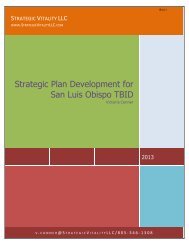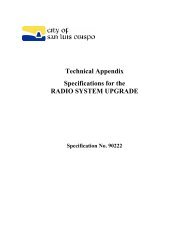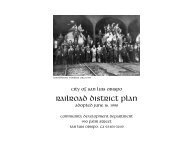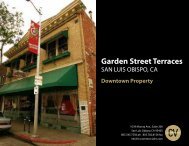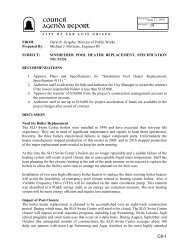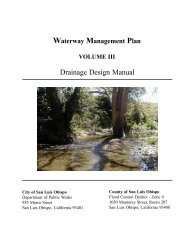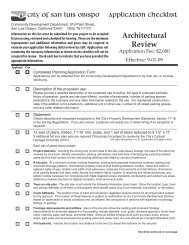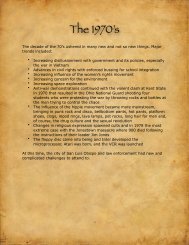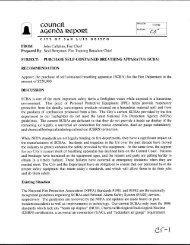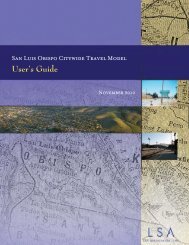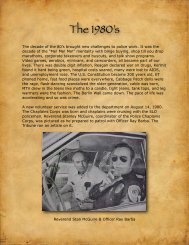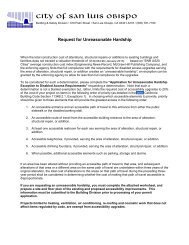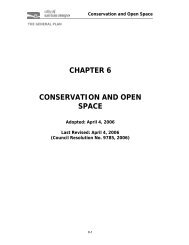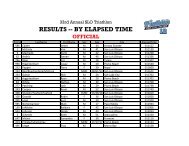Guide to Estimating Irrigation Water Needs of Landscape Plantings
Guide to Estimating Irrigation Water Needs of Landscape Plantings
Guide to Estimating Irrigation Water Needs of Landscape Plantings
You also want an ePaper? Increase the reach of your titles
YUMPU automatically turns print PDFs into web optimized ePapers that Google loves.
Chapter 3—<br />
Using the <strong>Landscape</strong><br />
Coefficient Formula<br />
The landscape coefficient formula was introduced<br />
in Chapter 2, and the three fac<strong>to</strong>rs which determine<br />
its value were discussed. Now these fac<strong>to</strong>rs are used<br />
<strong>to</strong> calculate values for the landscape coefficient. A<br />
series <strong>of</strong> field cases show the range <strong>of</strong> values that<br />
can be determined for KL. In Chapter 4, calculations<br />
using the landscape coefficient in the ETL formula<br />
are presented.<br />
Using the information presented in Chapter 2, values<br />
for the landscape coefficient can be calculated.<br />
The following cases show how the landscape coefficient<br />
is used for a variety <strong>of</strong> species, density, and<br />
microclimate conditions. Species fac<strong>to</strong>r values will<br />
be taken from the WUCOLS list, while density and<br />
microclimate values are based on the planting and<br />
site conditions described. For quick reference, the<br />
following table gives values for each fac<strong>to</strong>r.<br />
<strong>Landscape</strong> Coefficient Fac<strong>to</strong>rs<br />
Species Density Microclimate<br />
High 0.7 - 0.9 1.1 - 1.3 1.1 - 1.4<br />
Mod./Ave. 0.4 - 0.6 1.0 1.0<br />
Low 0.1 - 0.3 0.5 - 0.9 0.5 - 0.9<br />
Very Low < 0.1<br />
Case 1—A large, mature planting <strong>of</strong> star jasmine in<br />
a park in San Jose. It is in full sun and has little<br />
wind exposure.<br />
ks = 0.5<br />
kd = 1.0<br />
kmc = 1.0<br />
KL = 0.5 x 1.0 x 1.0 = 0.5<br />
Analysis: Star jasmine is classified as moderate in<br />
the WUCOLS list (moderate range = 0.4 <strong>to</strong> 0.6) and<br />
a midrange ks value <strong>of</strong> 0.5 is assigned. Since the<br />
planting is mature it will be considered full (i.e.,<br />
canopy cover = 100%), and being <strong>of</strong> one vegetation<br />
type, it is classified as an average density and kd is<br />
1.0. The microclimate is similar <strong>to</strong> reference evapotranspiration<br />
conditions (full sun, open area, no extraordinary<br />
winds) and, therefore, is classified as<br />
average and kmc is 1.0.<br />
Case 2—A mixed planting <strong>of</strong> dwarf coyote brush,<br />
Pfitzer juniper, oleander, purple hopseed, and olive<br />
in an <strong>of</strong>fice park in Los Angeles. The planting is<br />
full, exposed <strong>to</strong> sun all day, but not <strong>to</strong> extraordinary<br />
winds.<br />
ks = 0.2<br />
kd = 1.2<br />
kmc = 1.0<br />
KL = 0.2 x 1.2 x 1.0 = 0.24<br />
Analysis: All species are classified as low in the<br />
WUCOLS list and are assigned a midrange value<br />
<strong>of</strong> 0.2. Canopy cover is 100%, and since all three<br />
vegetation types occur, this is classified as a high<br />
density planting and a kd value <strong>of</strong> 1.2 is assigned.<br />
The microclimate is average and a value <strong>of</strong> 1.0 is<br />
assigned.<br />
Case 3—A mature planting <strong>of</strong> rockrose, star jasmine,<br />
and dichondra in an amusement park in Sacramen<strong>to</strong>.<br />
The planting is in full sun and atypical winds are<br />
infrequent.<br />
ks = 0.8<br />
kd = 1.0<br />
kmc = 1.0<br />
KL = 0.8 x 1.0 x 1.0 = 0.8<br />
Analysis: Species in this planting are in three different<br />
WUCOLS categories: low (rockrose), mod-<br />
23



